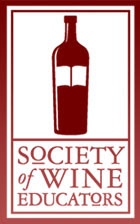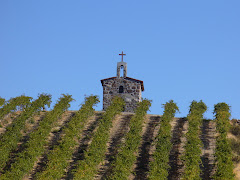 There has been a lot of talk about grower Champagne and how it is far superior to the major Champagne houses that dominate the marketplace here in the states (i.e., Moet-Chandon, Veuve-Clicquot, G.H. Mumm, et.al). Though like most wine geeks out there, I have been enthralled by these amazing, small family producers who grow all their own fruit and make their own wine, completely free of the large negociants,
There has been a lot of talk about grower Champagne and how it is far superior to the major Champagne houses that dominate the marketplace here in the states (i.e., Moet-Chandon, Veuve-Clicquot, G.H. Mumm, et.al). Though like most wine geeks out there, I have been enthralled by these amazing, small family producers who grow all their own fruit and make their own wine, completely free of the large negociants,Wines from producers such as Chartogne-Taillet, Gaston Chiquet, Vilmart, Paul Bara and Jacquart are critical darlings, garnering incredible reviews from Tanzer, Spectator and others. Yet the big problem is the advert machines that churn out full-page spreads for the major houses and keep the public’s eye transfixed on brands like Perrier-Jouet Fleur du Champagne, Moet-Chandon’s Dom Perignon and White Star, and Piper-Heidsieck’s Sublime. I love having the grower Champagnes on our shelves, but despite the rave reviews, they are complete unknowns to our customers, and therefore, no matter the knowledge my staff imparts to them, they (the bottles) remain permanent dust collectors.
I recently pulled up a paper written by Kevin Pike and Terry Thiese (the biggest champion of grower Champagne in the U.S.), and they offered at least a manifest of sorts on how retailers and restaurateurs can better promote the growers over the major houses. Yet despite the “ra-ra-sis-boom-bah” cheerleading routine that it offers up, there still isn’t a clear cut methodology on successfully selling these brands.
I have tried tastings with these wines before, but the problem presented there is that these wines are typically directly imported (not regularly stocked by our wholesalers), and therefore, any tasting allocations are not in anyone’s budget. Couple this with the fact that, especially this time of the year, the big houses are wheeling and dealing, and I can get some pretty outlandish prices on things like Dom Perignon and PJ Fleur. The same thing can’t be said about the grower Champagnes, which for the most part, remain the same high prices as last year, if not having taken price increases.
I am unsure of where to go with this juggernaut. I want to promote these brands. I want the customer to experience these brands. But I don’t need these brands just sitting on the shelf. After all, aren’t we in the business of selling wine? My boss certainly doesn’t want me “collecting” wine on his dime. What is a poor wine geek to do? Suggestions?











4 comments:
Kevin,
As someone who represents Grower Champagne I feel your pain. It was clear to me before I started selling these wines that they were vastly superior to the "budweiser" nature of the big houses, and now that I have been lucky enough to get into the nuts and bolts of production methods, grape selection, vineyard management, etc. I am completely drinking the proverbial kool-aid.
I hear you on the name recognition. People buy the yellow label because they know it, because their friends will know how much they spent, or it is less of a risk, or it is handy since it is found in every shop, restaurant, hotel, etc. across the country. I can go on for days about how it is physically impossible to produce 1.3 million cases of champagne per year in any fashion other than buying inferior grapes, wines and in some cases inferior finished Champagnes and slapping a familiar label on it, but you know all of this already.
So in terms of advice I offer: 1) POS materials. Shelf talkers, case card displays, one sheet presenters on the virtues of Growers next to the Champagne section, any of these goodies help. The high scores from the Spectator, et al. help. Even the first page of the Thiese manifesto is a good read for a potential bubblehead.
2) Staff education. You have been converted- spread the gospel. The troops on the ground are generally your greatest resource in sales. I am sure your enthusiasm for the Grower bubbles has spread to your staff, but perhaps they are not as familiar with the wines as you? Reading the Theise Champagne catalog is probably the best way to hammer home the message (avalable at skurnikwines.com), but also involve your staff in as much tasting as possible, and this includes core item Champagnes. There are plenty of great core item wines, such as the Pierre Peters Cuvee de Reserve, that if they try that wine and fall in love they will promote all of the Peters wines, including the DI stuff. We recognize the wines are not cheap, and that doing staff trainings is difficult, but we will help as much as we can.
3) Remind your customers of the value these wines represent- they are often less expensive than the Grand Marques, and they stem from riper grapes and better production methods. Remind them that these wines often outscore even the most luxury of luxury brands at a much lower price, and that they represent what the wine cost to make, not what some marketing board decided where the brand should be positioned.
4) They are AUTHENTIC. In a time that consumers are looking for quality items there is no more authentic products than these. They were not made by a conglomerate that focuses on handbags, watches, perfume or speed boats, they were made by a family that wanted to make the best wine possible. With the locavore movement, the green initiative and an overall desire to get back to local/ community driven products, this is as close as it gets to inviting a small family from France over to your house for dinner.
5) Constant vigilance. Stay on your soap box and constantly promote the wines. And this is by no means a suggestion to dog other brands. If someone wants to drop $50 on a bottle of Yellow Label without asking you a single question about the wine- by all means let them. But if you have a wine lover looking for a fine bottle of Champagne and not a brand, that is your market. When quality, complexity, texture, depth and flavor are the determinants then Grower Champagne is the only answer.
In the end the risk/ work is beset by the incredible rewards these wines offer. The market is taking notice, as Grower Champagne is the only segment of Champagne to see an increase over last year, while the large brands are off by 40%. At the end of the day the quality speaks for itself. They will never be an overnight phenomenon. But a long and steady climb that is already underway is gaining momentum, and hopefully it will for you too.
Please contact me directly if I can be of further help.
Sunny Brown
Vanguard Wines
sunnybrown@vanguardwines.com
Sunny,
Thanks for those. I will look ahead to creating a better program internally for selling these wines. Will be talking with Jeff H. about these and much more after the first of the year.
Cheers!,
K2
wao nice its informative post thanks for sharing it.
In the end the risk/ work is beset by the incredible rewards these wines offer. The market is taking notice, as Grower Champagne is the only segment of Champagne to see an increase over last year, while the large brands are off by 40%. At the end of the day the quality speaks for itself. They will never be an overnight phenomenon. But a long and steady climb that is already underway is gaining momentum, and hopefully it will for you too.
ZTE Blade A1 Review
DOOGEE F5 Review
KINGZONE N5 Specs
Holds K3, Huawei P8 Clone
Post a Comment